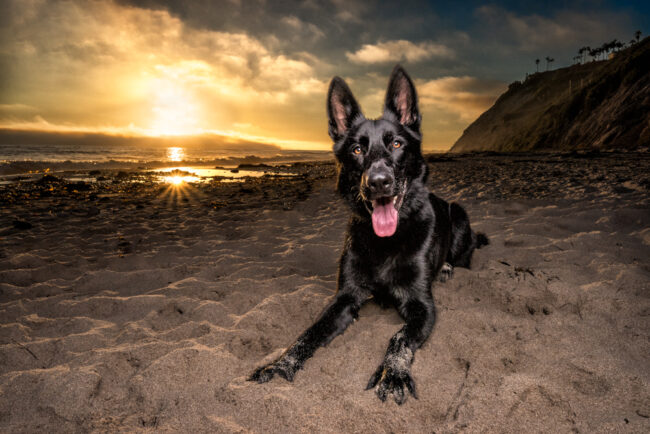
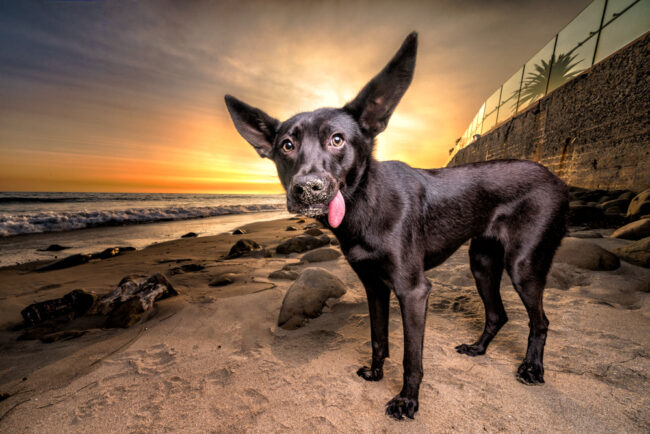


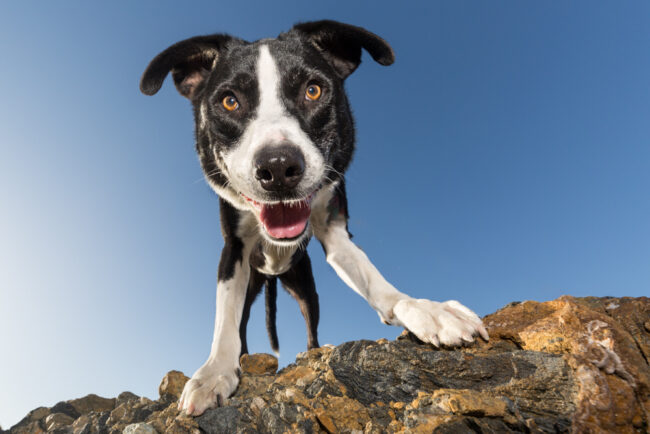
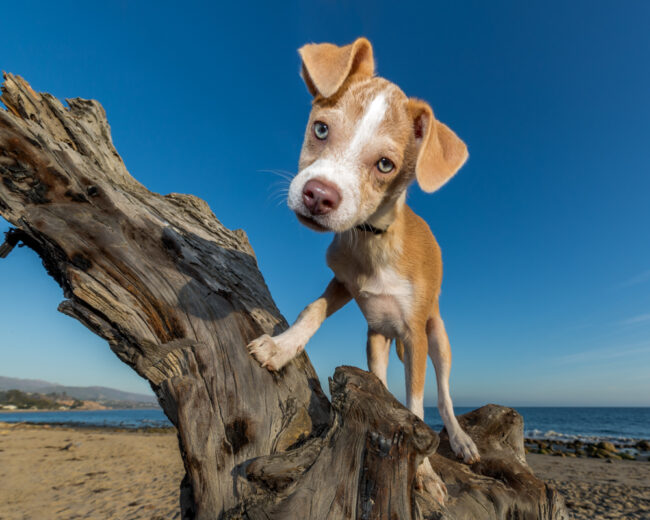
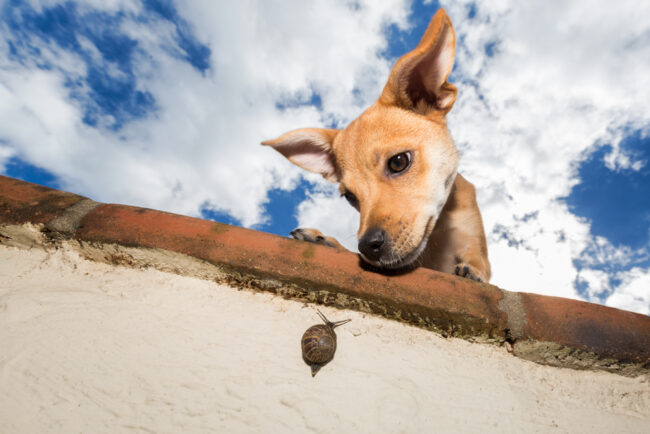
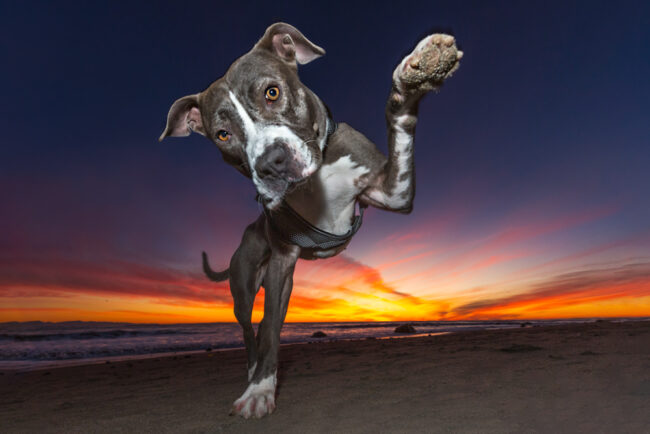

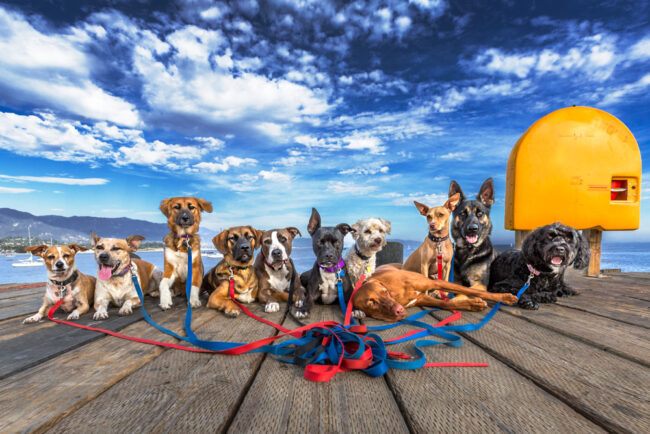
Wink Face Photography
Photographer: Wendy Domanski
Instagram
Heidi: Who is more nervous on set, the dogs or the owners?
Wendy: It can be a combination of the two scenarios. Sometimes the dogs are a little shy when they see the camera or hear the shutter. If I am using off camera flash some dogs can be a bit nervous with the bright flashing lights. I always take extra time with the nervous dogs and start to desensitize them with treats if they are food motivated. The dogs are rewarded with a treat every time the shutter is pressed so they view it as a positive experience. The is especially true for dogs at the shelter that are often coming from a loud and stressful environment. The key is to go slow with them and help build trust before you can even think about bringing the camera out.
For the 2-legged people on set, a lot of times they’re worried or anxious about their dogs not behaving perfectly. I always try to have a conversation with them prior to the session and communicate with them that not everything is going to go perfectly and that’s okay. They are dogs or cats or whatever pet it is. There is a lot that is going to go wrong. I always tell them, if I wanted to photograph perfect dogs I’d be a stuffed animal photographer and what’s the fun in that?! If the owners are stressed the dog will pick up on it and it will ultimately translate to a stressed-out dog which clearly doesn’t make for great photos. I want it to be a fun experience for the dogs and the humans so I’m always very reassuring and joking with the owners to help put them at ease and laugh a lot at the “bloopers” so they know it totally normal and part of the experience. At the end of the session I hear more often than not from the owners they had so much fun.
What are some of the creative ways you have to engage the dogs?
Every dog is different and it’s important to learn what motivates them. The best way to do that is to have a conversation with the owners prior to the session. For dogs it could be a ball, a treat, their favorite toy, or maybe certain words they react to. I’ll ask the owners if their pet is nervous around new people, loud noises, whatever it might be. The more information you have on the dog in advance the better it is so you can be prepared for the session. Noises are also a great way to get their attention. I always have my bag of every noise maker in the world including whistles, squeakers, and duck noise makers to name a few. I’ve also perfected a lot of silly noises myself to help get the dog’s attention. I often get a of strange looks from the owners and anyone observing the session wondering where the crazy sounds were coming from — “Did your camera make that noise?!” which always makes me laugh. I wish my camera made all those sounds and it was so easy. My dolphin noise is a classic example. You have to be prepared to do whatever it takes to get the dog’s attention and not care how crazy you look. I find that this helps to put the humans at ease too. If they’re also in the photos I’m getting genuine smiles from people laughing at me and having fun and I’m just fine with that. An important point to make with the noises however is that you must be prepared to the take the photo right after making the noise as each sound will only work once, maybe twice and then it’s time to go to the next trick in your bag.
How has this type of work informed your photographic eye and you as a creative?
The key to pet photography — especially dog photography — is to engage with the dog and bring out their unique personality. If a dog is happiest at the beach and running and jumping in the water then naturally we will pick a beach setting and we will do action shots. If a dog is nervous around other people or pets we may choose a quiet park. Based on how the dog is reacting and I may help put them at ease by choosing a longer lens so I can give the dogs more space. For the happy go lucky dogs that are playful and quirky I will often use my wide angle lens and get up close and personal to show off their funny expressions. This is often my favorite lens for pet photography not only because it helps bring out their fun features, but also to help incorporate the background or sky that is often an important element in my photos.
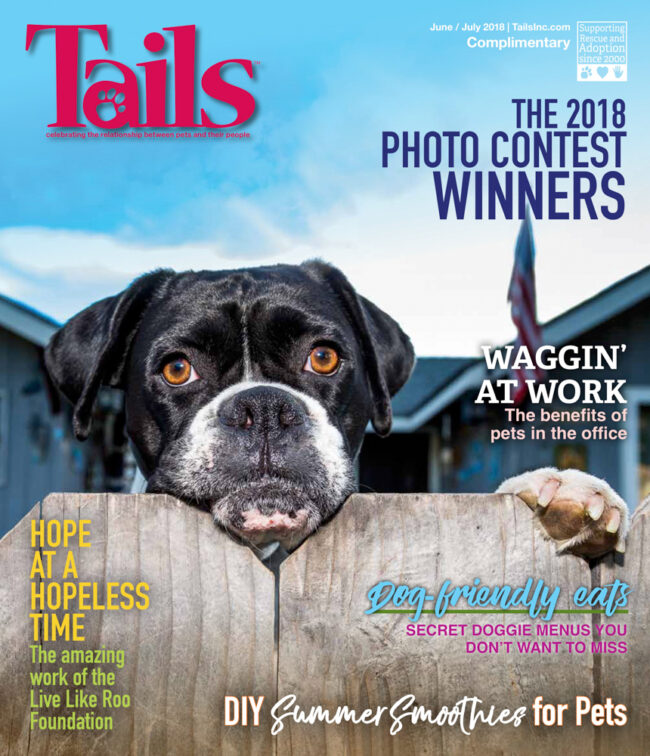
Your photography also involves outreach and rescue, how did that come about?
I’ve been very active in animal welfare and rescue long before I became a pet photographer. In fact, it was the main reason that I became a pet photographer. I wanted to help take beautiful photos of the dogs at the shelter to help get them noticed and adopted faster. At that time I was in medical device sales and had no idea how to use a camera nor did I even own a fancy camera. I decided to take a leave of absence from my job and attend photography school in Montana the summer of 2015. While I was there I volunteered at the local Humane Society and Animal Control photographing their adoptable dogs and cats. This not only helped the shelters but it gave me valuable experience photographing animals and learning the craft of pet photography.
I fell in love with photography so much that when I returned home I took a leap of faith, quit the sales job and pursued pet photography full time. Keeping true to my mission of helping animals in need, in addition to booking regular client sessions I continue to donate a substantial amount of time photographing animals at local shelters as well as donating photography sessions to benefit numerous animal welfare agencies including C.A.R.E4Paws in Santa Barbara, CA.
What type of change have you seen since the onset of the pandemic?
The biggest change has been the amazing number of people who have adopted or welcomed pets into their homes. I have had an increase in client sessions wanting to photograph their new family members. Sadly, as people are going back to work many dogs are ending up back at shelters and shelters across the country are filling up once again.
What is the main difference for you photographically, beside verbal (words) between dog and people portraits? and how are they similar.
For me the main difference between photographing people and dogs is that people often require a lot more direction and posing. They look to the photographer for more guidance and can be self-conscious about their appearance. They may want techniques to help minimize whatever their perceived issue is or ask me to “Photoshop it out” if possible. But it’s exactly the opposite with a dog — whatever makes them different is what I want to capitalize on. If the dog has big ears then perfect, I want to get those ears in all their glory. If it’s a dog with a big head, long tongue whatever it is that is unique to them, I want to show it off. I feel like more people should embrace those unique things that make them so different.
Regardless if it’s a dog or human that I’m photographing, the most important things to do are to make a connection with them, put them at ease, and always have fun. I don’t want any forced smiles. For people that may mean I’m using my Midwestern sarcasm to make them laugh. For the dog, I’m probably doing something odd or funny or making the dolphin noise which many times works for both.
